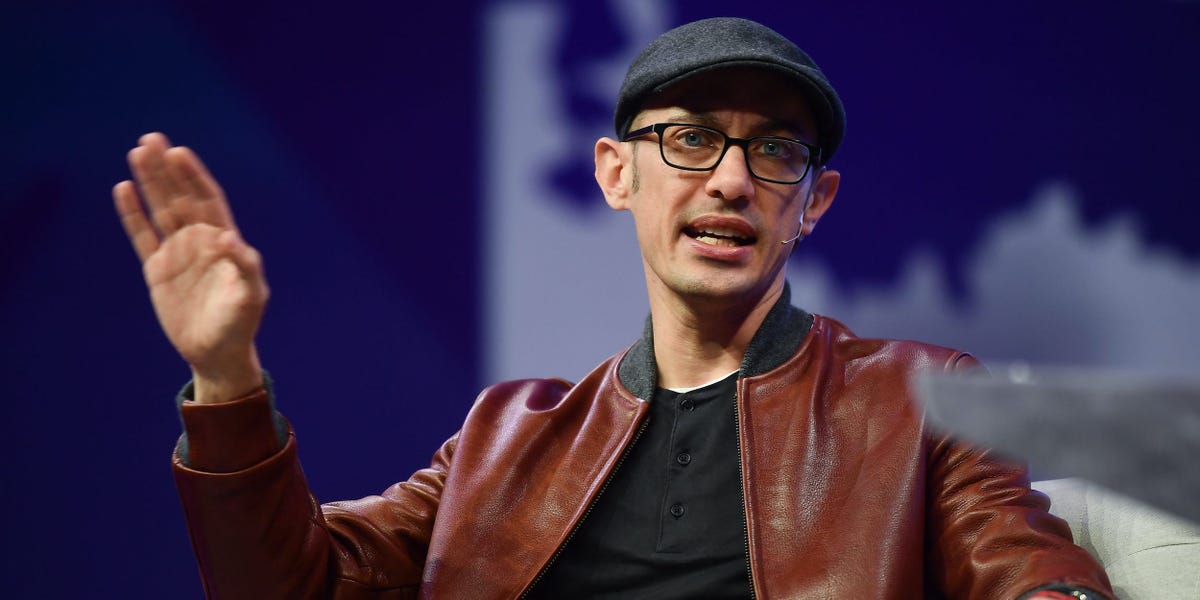- Shopify shifted out of a pandemic boom and conducted layoffs across the company this year.
- A botched foray into logistics and other cultural shifts have been transformative, insiders said.
- Shopify’s quest to redefine itself may lie in what it’s worked on all along: e-commerce software.
Shopify shocked the business world when it announced on May 4 it would sell most of its logistics business to Flexport after billions of dollars had been invested in it over four years.
The abrupt shift away from logistics was just the most visible peak of a mountain of intense change for the Canadian e-commerce company. Employees have described a cultural shift inside the 17-year-old firm, beyond a strategic pivot — more like a full-blown midlife crisis. It now plans to refocus on artificial intelligence and what its leaders feel it does best: developing software for the millions of merchants who use its products.
Twelve current and former employees speaking with Insider outlined a number of ways Shopify changed in the past year. The company created policies around how workers were compensated, managed, and expected to communicate with each other. It replaced almost its entire C-suite. The company’s ranks swelled to record numbers and then shrank again because of management’s missteps.
Shopify’s latest round of layoffs, in May, affected 2,000 employees, or 20% of the company, in addition to those leaving from the logistics divestment. While many headlines centered on the surprise logistics decision, the layoffs had a broad influence across the company.
“Shopify buried the lede here on this being just a logistics cut and that’s it,” an employee who was laid off in May said.
It was Shopify’s second mass layoff in 10 months, a significant fall from grace for a company that saw extreme growth in the years prior, thanks to the pandemic. Shopify’s business doubled between 2020 and 2021, and it grew to more than 11,000 employees by the end of 2022.
A representative for Shopify declined to comment.
Wall Street is optimistic about Shopify’s future now that its expensive logistics project is no more. Shopify’s stock rose more than 20% on the news of the sale to Flexport and has remained up in the weeks since then. Instead, analysts say Shopify could drive growth in building out the software offerings it already has.
Shopify has already started making bigger plays for enterprise businesses and testing uses for AI both internally and externally.
“Investors are seeing them less as the next Amazon and potentially more as the next Salesforce,” Oppenheimer analyst Ken Wong said.
From competitive edge to dead weight
Shopify originally had high hopes for its logistics project and planned to compete with Amazon, two former employees said.
But Shopify’s logistics acquisitions, which came with around 550 more staff altogether, started to look like dead weight after the shine of the initial announcements wore off.
In 2019, the company announced its move into logistics with a planned partner network of warehouses and pledged $1 billion to the effort. Following that, thousands of inquiries from merchants wanting to use the service streamed in, a member of the founding team said.
In September 2019, it announced it would acquire the collaborative-robotics firm 6 River Systems and build Shopify Fulfillment Network — mimicking a move its supposed rival Amazon made in its 2012 acquisition of Kiva Systems.
“It was so exciting because we thought, ‘This is the edge we need,'” a former developer in logistics said. “We were going to take all of the logistics headaches that people need to worry about and just magic them away.”
Over time, staff questioned whether 6 River Systems was the boon they originally thought it would be, since the robotics weren’t as useful for an operation of meager size. Plus, many Shopify Fulfillment Network team members lacked logistics experience, the founding team member said.
After several strategy shifts, Shopify’s 2022 acquisition of Deliverr for $2.1 billion was intended to be the final answer — a fully functioning network of independent warehouses tied together with software.
Almost immediately, the team realized integrating Deliverr with Shopify would be tough, two team members said, and Shopify had “no idea” how, a former team member said. Shopify’s existing software and Deliverr’s were built in different coding languages for a start, and they never fully integrated.
By the beginning of 2023, the attitude toward logistics inside Shopify had shifted to palpable frustration, four people who worked for Shopify’s logistics division said.
Within six months of its Deliverr acquisition, Shopify was looking to either sell the logistics business or wind it down.
Shopify’s latest moves affected the company’s culture
Independent of logistics, Shopify saw massive cultural shifts in the past several years.
Some employees said the hiring sprees earlier on in the pandemic contributed to bureaucracy and slowed their work down. The company seemed well aware that this hiring created excess management layers. In March, the company introduced a framework categorizing employees as either “managers” or “crafters.”
Though it was framed as a way to compensate crafters as highly as managers, the new structure worried at least some managers that they would have a target on their backs once layoffs began. Many managers were let go in May’s layoffs, confirming those fears.
In his letter about the most recent layoffs, CEO Tobias Lütke wrote that the balance of managers and crafters had grown “unhealthy” at Shopify.
And prior to the pandemic, before Shopify declared its workforce would be permanently “digital by default,” the e-commerce company was known for a vibrant office culture, with perks including plentiful food. Earlier offices in Ottawa, Ontario, even had a go-kart racetrack.
Going fully remote had some unintended consequences. One core tenet of Shopify’s work culture is “default to open,” meaning it values transparency and sharing information with employees.
Some workers said that changed sometime between 2020 and 2021 as the company began asking volunteer “channel champions” to monitor Slack conversations that could be problematic.
The company’s town halls — formerly a forum for workers to ask leaders questions — changed to a prerecorded format.
“All of the charm was gone,” a former developer said.
Employees pointed to differences in the language Lütke used to announce the company’s two recent layoff rounds as another sign that things had changed.
In the memo Lütke sent during Shopify’s first round of layoffs, in July, he took personal responsibility for miscalculating e-commerce’s growth potential, saying: “Ultimately, placing this bet was my call to make and I got this wrong. Now, we have to adjust. As a consequence, we have to say goodbye to some of you today and I’m deeply sorry for that.”
Some found the letter announcing May’s layoffs — which affected even more people — to be much less personal. The letter referred to Shopify’s logistics work of the past four years as a “side quest” that distracted the company from its “main quest.” The “main quest” and “side quest” characterization — an apparent reference to video games — was jarring to many, two former employees said.
“People’s lives are not games,” a recently laid-off employee said. “All of these are leadership decisions, but the people who suffer the most are the people who went on these missions he put them on.”
Some also said they felt it was out of character for Lütke compared with prior years. One former developer in logistics said that Lütke’s way of speaking had become more philosophical in recent years, with him often describing Shopify’s mission as an “infinite game.”
“I’ve never seen him just talk down so much to the things people were working on,” that person said.
“Tobi is a visionary, for sure,” another former longtime employee who left Shopify last summer said. “I think there’s a ruthlessness there, and that’s needed to be a visionary and to push an agenda forward.”
A C-suite reshuffle
A slew of new faces joined the C-suite in 2022, replacing some longtime executives, including Toby Shannan, the chief operating officer who retired from his role that year. Shopify brought on the 22-year Morgan Stanley veteran Jeff Hoffmeister as its chief financial officer and Bobby Morrison as its chief revenue officer.
Meanwhile, Allan Leinwand, the chief technology officer who joined Shopify just over a year beforehand, departed Shopify in January, as did two of his most senior hires. Lütke said he would not fill the chief-technology-officer position and instead take on much of Leinwand’s work himself.
Shopify also promoted Kaz Nejatian, a former Facebook executive who was previously Shopify’s vice president of product for merchant services, to chief operating officer in September.
Six current and former employees described Nejatian as efficiency-focused and intense, with him frequently dropping F-bombs in meetings. One former data-science employee said Nejatian brought Silicon Valley-style work practices when he joined the company from Facebook in 2019, as he instituted stricter planning cycles and added more structure to Shopify’s previously “easygoing” culture.
“He gets things done,” this former employee said. “He’s very assertive in a work sense.”
In October 2021, Nejatian tweeted that China’s growth was due, in part, to companies that worked from 9 a.m. to 9 p.m. six days a week and that “we should celebrate hard work more than we do,” a point of view that drew the ire of many employees.
“It felt like this new, rogue energy,” an employee who left Shopify last summer said. “Shopify always felt to me like a company that cared about its humans and the humans that worked there cared about each other. This felt very different from that.”
As chief operating officer, Nejatian played a larger role in implementing companywide policies. He was the primary driver of Chaos Monkey, a policy added in January that included automatically canceling all meetings of more than two people. After a two-week moratorium, employees were allowed to add larger meetings back onto their calendars if they felt they were necessary. Group Slack channels were shut down, and conversation moved to Meta’s Workplace.
“All of this feels chaotic, which is kind of the point,” Nejatian wrote in a January email detailing the changes.
The changes aimed to improve employees’ ability to focus on their work. At the time, workers told Insider they worried the changes would further reduce transparency and make their jobs more difficult.
“Shopify’s reputation has been rooted in its workplace culture and relationships built at work,” one said. “For me, it’s another example that they are not the same company as they used to be and that their internal and external values have shifted.”
Got a tip? Contact Madeline Stone at [email protected], at [email protected], or on the secure-messaging app Signal at (646) 889-2143 using a nonwork phone. Contact Emma Cosgrove at [email protected].
Read the full article here





